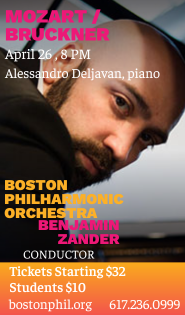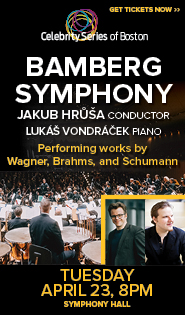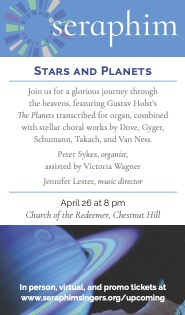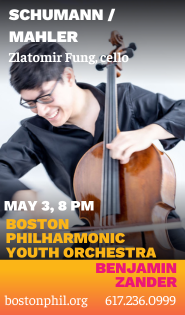Tanglewood continues its traditions with student musicians tackling Ives
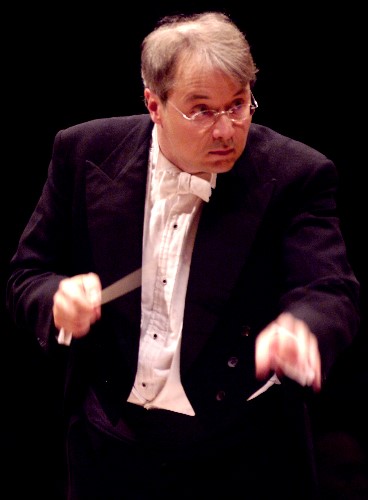
Stefan Asbury conducted the Tanglewood Center musicians in music of Ives, Schoenberg and Stravinsky Monday night.
In 1936, members of the Tappan family donated their estate in the Berkshires to the Boston Symphony Orchestra. Under the guidance of music director Serge Koussevitzky, the Tanglewood summer festival was born, officially 75 years ago this August. The organization is celebrating the anniversary with a new digital streaming audio project, offering 75 historic performances from Tanglewood for online listening and purchase.
While the festival remembers its past, the tradition continues, with an orchestra full of talented young musicians in residence at the Tanglewood Music Center, where they study with members of the BSO. On Monday night, the students played the third of four weekly concerts, this time under guest conductor Stefan Asbury in Seiji Ozawa Hall.
Not one to let the kids down easy, Asbury led a daunting program by any professional standard. They responded with sparkling energy and vitality, and more than their share of poise in the face of pressure. If the evening had an air of the carnival about it, it was because two of the most famous orchestral evocations of the chaotic fair began and concluded the concert.
An almost imperceptible whoosh of sound began Charles Ives’s Three Places in New England, with blurred chords undulating under the soft quotations of tunes evoking the Civil War, an elegiac tribute to the soldiers commemorated in the portrait of Colonel Shaw’s regiment by Augustus St. Gaudens. The middle movement was as boisterous and multiphonic as the dream-memory of the Fourth of July picnic that inspired it, with its clash of quoted patriotic tunes and out-of-sync bands. The third movement, a tribute to a walk Ives enjoyed with his new bride along the Housatonic River — which has its source not far from Tanglewood — rolled tidally, a sort of American Rhine music of soft chords and burbling woodwinds. Although not all of the members of the vast orchestra performed fluently — and not only in the ways that Ives intended — there was plenty of gusto in the big crescendos.
After intermission, it was the original 1911 score that Stravinsky composed for the ballet Petrushka, with its correspondingly Russian folk music quotations and raucous Shrovetide fair. Ives and Stravinsky, however, are not as far apart as one might think, as scholar Andrew Buchman noted in an essay in Charles Ives And The Classical Tradition. Both sought a way around “the problem of achieving an individual voice within a received tradition,” and both responded to that problem through “the use of melodic paraphrases in polyrhythmic layerings.” Neither quoted completely or literally, but just as the deconstructed snippets of Yankee Doodle, Old Black Joe, or Columbia, the Gem of the Ocean are easily detected by an American ear, a Russian one recognizes the music Stravinsky quoted.
Asbury kept the pulse even and clear, using gestures that made not only the beat evident but how to weight the notes in each phrase, to form them into gestures. The happy response of the musicians gave the result a crackling vitality.
Between the two was the most difficult score in many ways, perhaps because it was likely the least familiar to the musicians, Schoenberg’s Piano Concerto, with Emanuel Ax as soloist. The piece was commissioned by Oscar Levant, a pianist perhaps best remembered today as the sad sack who battled himself playing Gershwin’s Concerto in F in An American in Paris. But Levant also studied composition with Schoenberg in the 1930s, and the concerto displays a form of twelve-tone writing that has remarkable melodic and formal appeal. Tanglewood favorite Emanuel Ax played the solo part with plenty of bravura zing, challenging the student musicians to keep up with his sometimes unpredictable shifts of tempo.
For the Schoenberg, Asbury stepped aside from the podium in favor of one of the Tanglewood conducting fellows, Ken-David Masur. In his mid-30s and with conducting credits to his name, including being principal guest conductor of the Munich Symphony, Masur is hardly inexperienced. He has an incisive gesture and formed the piece well, but a surer hand might have produced a more cohesive performance. His father, Kurt Masur, who shared part of his own podium time with the Boston Symphony Orchestra on Sunday afternoon with his son, looked on from a box, as did cellist Yo-Yo Ma. The sense of the Tanglewood tradition being handed from generation to generation hung in the air.
Posted in Performances
